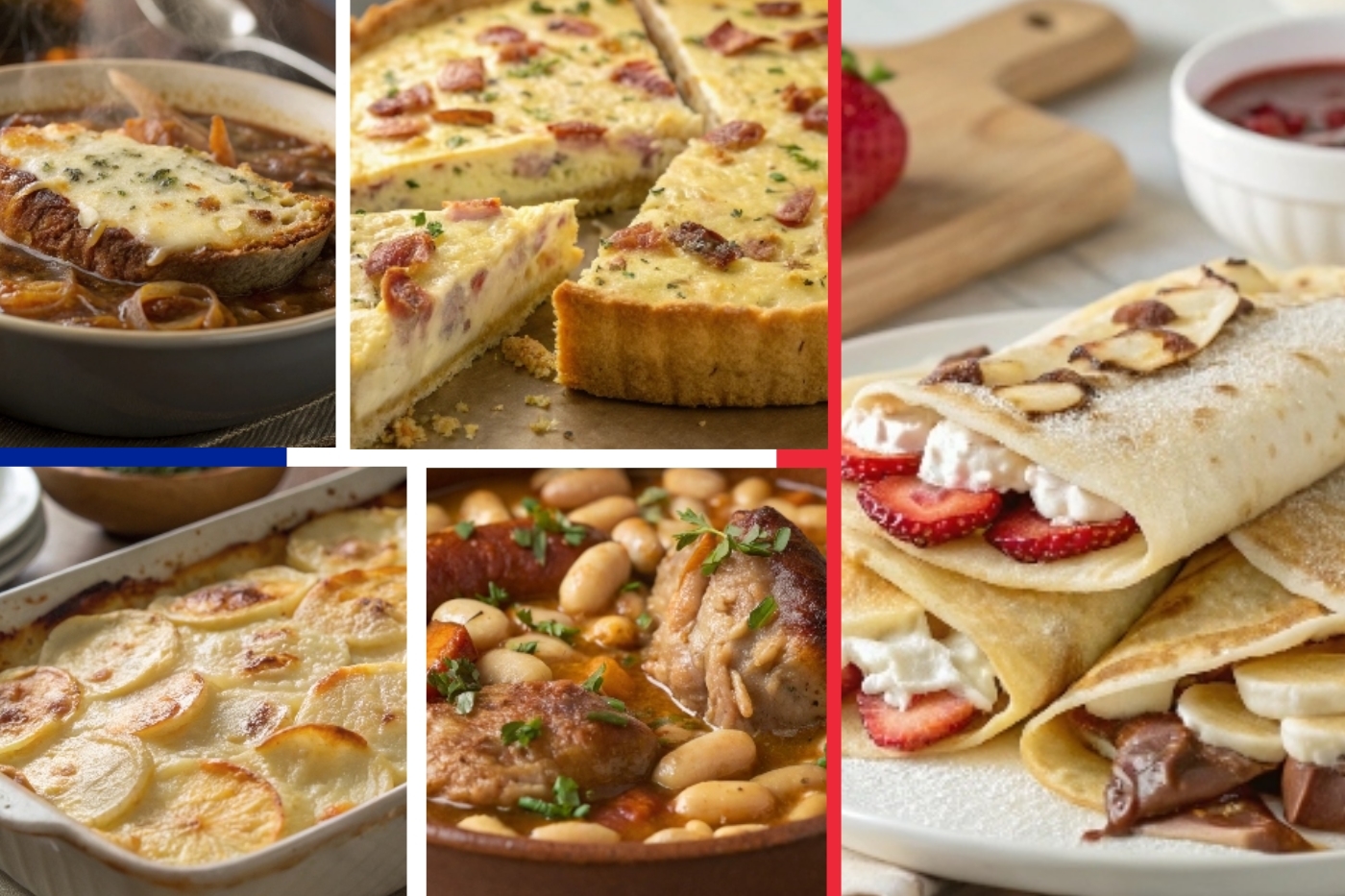There is something irresistibly enchanting about the best french dishes, those gastronomic marvels that have seduced taste buds around the world. The mere aroma of simmering onions or flaky pastry can transport you to quaint cobblestone streets and bustling Parisian cafés. In these creations, flavors mingle with history, technique, and passion, telling tales as old as time. Together, the best french food recipes weave a tapestry of warmth and artistry, showcasing the essence of french food and the nation’s culinary soul.
As you embark on this epicurean odyssey, anticipate a kaleidoscope of sensations spanning the silky depths of onions in Soup à l’Oignon to the crumbly-sweet splendor of a classic Tarte Tatin. Each savory or sweet revelation embodies the heart of french recipes authentic, paying homage to age-old traditions and refined execution. Whether you’re seeking nostalgic comfort or gastronomic thrills, these dishes—plus the legendary traditional cassoulet recipe—promise a sensory voyage steeped in cultural heritage and timeless elegance.
Exploring the Essence of French Gastronomy
French cuisine has garnered global admiration, often celebrated as the gold standard for epicurean artistry. The best french dishes serve as gastronomic snapshots of a country that places profound importance on preserving tradition while continually innovating. From the northernmost reaches of Normandy, famed for its buttery elegance, to the sun-kissed Provençal coast, where fresh herbs and bright vegetables reign supreme, there is an astounding diversity hidden within this single nation. At the heart of it all lies an enduring respect for local, seasonal produce—a guiding principle that breathes life into french recipes authentic. This unwavering devotion to quality, simplicity, and technique allows each ingredient to sing without unnecessary complication.
Wander through a village market in Provence, and you’ll see luscious tomatoes, bouquets of thyme, and aromatic garlic that quickly finds its way into Ratatouille or a hearty bowl of french food brimming with character. Venture to Alsace, and you’ll encounter tart flambée or dishes showcasing robust regional cheeses. Yet, no matter where you roam, the unifying thread is a love affair with flavor. Each bite of the best french dishes speaks volumes about the harmony between produce and craft. This synergy has persisted for centuries, nurtured by an unbroken lineage of artisanal skills passed down through generations. The ethos? Elevate the ingredient; never overshadow it.
The lore surrounding traditional cassoulet recipe is a testament to this principle. Originating in southwestern France, it takes humble beans and transforms them into a legendary stew through slow cooking and careful layering of tastes. For foreigners, it may appear an indulgence—a dish requiring patience, dedication, and, arguably, love. But that’s precisely what defines so many best french food recipes: they aren’t just about sustenance but about capturing the spirit of family, community, and region. Each simmer and stir is an homage to those who came before, ensuring knowledge lives on each time the pot is set to cook.
This sense of preservation extends well beyond hearty stews. Take the airy elegance of a Crêpe or the refinement of Duck Confit—both vibrant reflections of french recipes authentic. Every region has a story to tell, from rustic farmland stews to regal city confections. In bustling metropolises, you’ll stumble upon chic brasseries dishing out Steak Frites and onion soup. In pastoral communities, you’ll uncover age-old techniques for breadmaking and artisanal cheese production. It is precisely this juxtaposition of humble and sophisticated that nurtures such a vast culinary landscape.
Ultimately, the power of these best french dishes lies not just in their taste but in their ability to evoke emotions. They transport us to simpler times while challenging us to appreciate finer details. They unite families around the table, forging bonds through shared experiences. They inspire budding chefs to honor tradition while daring to create something new. In every swirl of a spoon, every crisp bite of perfectly baked pastry, and every swirl of velvety sauce, French gastronomy invites us to celebrate life’s small joys. And in that invitation, we discover why french food remains so profoundly meaningful across borders, cultures, and generations.
Table of Contents
Soup à l’Oignon
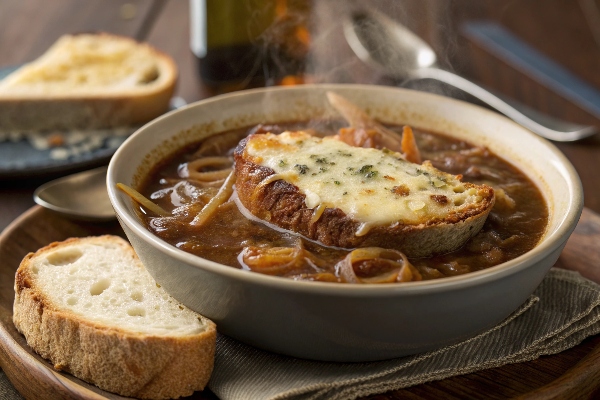
My first slurp of Soup à l’Oignon was a revelation during a winter trip to Paris. Steam curled from the bowl, each spoonful uniting caramelized onions and a savory broth into something soul-soothing. I knew instantly that this masterpiece belonged among the best french dishes. The thick slice of baguette, crowned by melted cheese, added tantalizing texture, enveloping me in a comforting warmth. Wrapped in that deeply savory aroma, I felt a sense of wonder, convinced I had found a new gastronomic love.
What makes Soup à l’Oignon so memorable in the realm of french food is its contrast of sweetness and depth. The onions, gently cooked until golden, form a perfect marriage with a rich stock, reflecting the core tenet of french recipes authentic simplicity. Topping it off with crusty bread and cheese creates an irresistible harmony of textures. Each bite reminds us of tradition and the magic that flourishes when humble ingredients meet patience and respect. It’s a classic that never fades.
- Level of Preparation: Easy
- Key Ingredients: Onions, stock, butter, baguette, cheese
- Method & Steps:
- Slowly caramelize onions in butter.
- Add stock; let simmer.
- Transfer to bowls; top with bread and cheese; broil until bubbly.
- Average Calories: ~350 per serving
- Techniques: Slow caramelization, proper seasoning
- Budget: Low
Quiche Lorraine
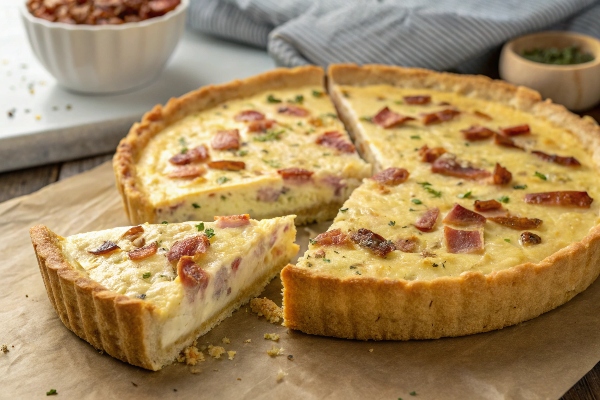
One early morning, nestled in a friend’s cozy cottage in Brittany, I savored a warm slice of Quiche Lorraine fresh from the oven. The seductive aroma of bacon and melted cheese was enough to stir me from slumber. Rich custard enveloped smoky morsels, all cradled by a flaky crust that seemed to melt on my tongue. In that moment, I understood how Quiche Lorraine has rightfully earned its place among the best french dishes—it is an ode to everyday ingredients turned sublime.
Quiche Lorraine exemplifies what makes french food so adored: straightforward techniques yielding refined results. Eggs, cream, cheese, and bacon come together in a velvety filling, highlighting the cornerstone of french recipes authentic—simplicity of quality. The crispy crust and creamy interior are a study in contrasts, offering a comforting indulgence. Perfect for brunch or a light supper, each slice is a testament to how even the humblest elements, when treated with care, can produce a meal both memorable and effortlessly chic.
- Level of Preparation: Medium
- Key Ingredients: Pie crust, bacon (or turkey bacon), eggs, cheese, cream
- Method & Steps:
- Pre-bake the crust to keep it crisp.
- Cook bacon; whisk eggs, cream, and cheese together.
- Combine with bacon; pour into crust; bake until set.
- Average Calories: ~400 per slice
- Techniques: Blind baking, careful mixing
- Budget: Moderate
Ratatouille
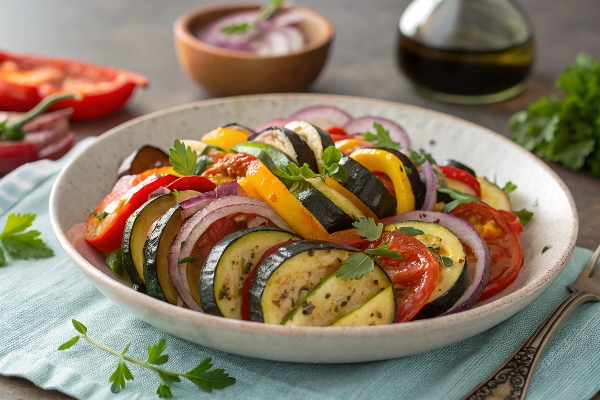
My encounter with Ratatouille happened in a sunny Provençal kitchen. Vibrant peppers, zucchini, and eggplant sizzled under a drizzle of olive oil, creating a kaleidoscope of colors and aromas. Each spoonful felt like a warm breeze, evoking lavender fields and cicadas singing in the distance. It was immediately clear why Ratatouille stands proudly among the best french dishes—it’s an homage to the land itself, capturing sunshine in every tender bite. Sampling it, I felt a deep connection to nature’s simplest gifts.
At its core, Ratatouille exemplifies best french food recipes at their purest form. The marriage of tomatoes, garlic, and onions underpins the luscious harmony, a standard in french recipes authentic from Provence. Slow-cooking ensures each vegetable shares its essence, yielding a stew both robust and refreshing. Whether served as a main course with crusty bread or a colorful accompaniment, its bright flavors and nourishing warmth remind us that humble produce can be transformed into an elegant expression of french food tradition.
- Level of Preparation: Medium
- Key Ingredients: Eggplant, zucchini, bell peppers, tomatoes, onions, garlic, herbs
- Method & Steps:
- Sauté vegetables individually to preserve their texture.
- Combine in a pot; simmer with herbs and garlic.
- Cook gently until flavors meld.
- Average Calories: ~150 per serving
- Techniques: Layered cooking, slow simmering
- Budget: Low to Moderate
Cassoulet
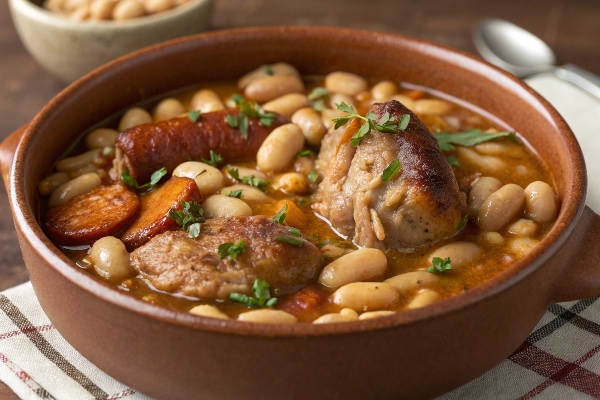
In a tiny village in southwestern France, I tasted a traditional cassoulet recipe that felt like pure comfort in a bowl. Plump white beans, tender meat, and a gently bubbling sauce were brought to the table in a rustic pot. One spoonful banished the winter chill outside, reminding me that certain dishes act like culinary blankets for the soul. Its rich, slow-cooked nature made it clear why cassoulet merits a top spot among the best french dishes—a centuries-old favorite that still warms hearts today.
Cassoulet’s magic lies in the sum of its parts—beans, poultry, sausages—simmering patiently until flavors converge in a luscious tapestry. It’s a hallmark of french recipes authentic: time-honored methods passed down through generations, each simmer coaxing out deeper nuances. Its velvety texture envelops the palate with savory comfort, an embodiment of french food that thrives on patience and tradition. As you savor each bean, you taste the legacy of shared meals, familial bonds, and the unwavering belief that slow cooking can kindle profound warmth.
- Level of Preparation: Hard
- Key Ingredients: White beans, poultry (duck or chicken), sausage, tomatoes, onions, herbs
- Method & Steps:
- Soak beans; cook until partially tender.
- Brown meats; layer with beans in a casserole dish.
- Slow-cook, allowing flavors to meld into a hearty stew.
- Average Calories: ~600 per serving
- Techniques: Layering, lengthy baking
- Budget: Moderate to High
Salade Niçoise
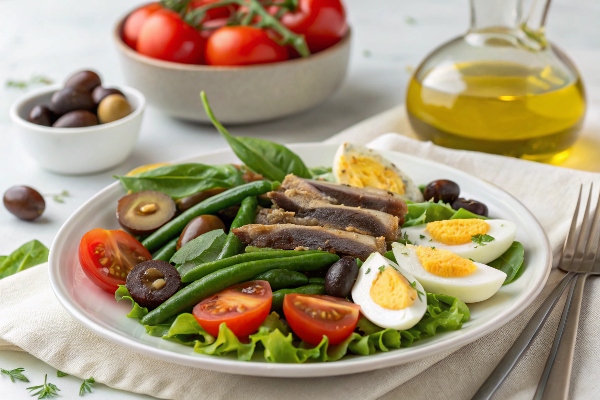
I first encountered Salade Niçoise on a sun-washed terrace in Nice, where crisp greens, plump olives, and chunks of tuna invited me to taste the Mediterranean sunshine on a plate. One forkful brought bursts of tangy, briny, and refreshing notes, showcasing how the best french dishes excel at balancing flavors. The immediate sensation was one of ease and contentment, as though I were enveloped in the leisurely rhythm of the Côte d’Azur. It felt like the embodiment of coastal French bliss.
Salade Niçoise resonates with the spirit of french food at its most vibrant. Featuring crunchy green beans, ripe tomatoes, and hard-boiled eggs, it’s a parade of color and texture. A drizzle of olive oil and a hint of vinegar underscore french recipes authentic, relying on fresh produce to shine. Each ingredient maintains its identity while contributing to a lively symphony of taste. The result is a salad that’s both laid-back and sophisticated—perfect for those seeking a flavorful, light dish that never compromises on character.
- Level of Preparation: Easy
- Key Ingredients: Lettuce, tuna, olives, green beans, tomatoes, hard-boiled eggs
- Method & Steps:
- Blanch green beans; assemble crisp lettuce.
- Layer with tuna, olives, and sliced eggs.
- Drizzle lightly with olive oil and vinegar.
- Average Calories: ~400 per serving
- Techniques: Blanching, fresh assembly
- Budget: Low to Moderate
Duck Confit
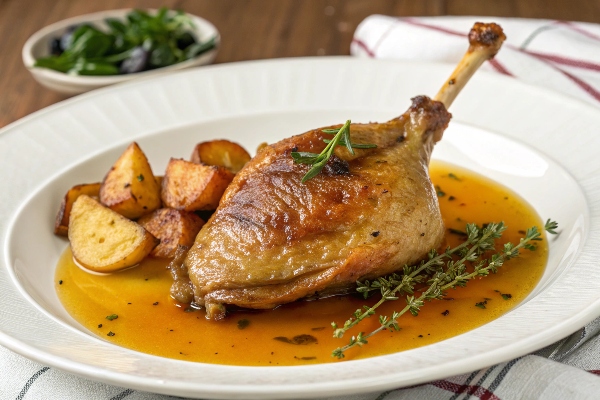
An unforgettable evening in Gascony introduced me to Duck Confit—the skin shimmering with a golden crispness, concealing tender, succulent meat beneath. One bite told me this dish rightly deserves its place among the best french dishes. It was as if time slowed down, each morsel melting in my mouth while the crackle of the skin lingered. The deep, savory richness captured generations of culinary heritage, leading me to marvel at how one ingredient—duck—could achieve such astonishing contrasts of texture and flavor.
Duck Confit epitomizes the art of french recipes authentic. The duck is salted and cured, then gently cooked in its own fat until it becomes exquisitely tender—a prime example of french food preservation. That final crisping of the skin seals in the flavors, delivering a delightful crunch that meets the succulent flesh. Rarely does a dish balance indulgence and simplicity so perfectly. Serve it with lightly dressed greens or roasted potatoes, and you’ll discover why it remains a fixture of classic French dining.
- Level of Preparation: Hard
- Key Ingredients: Duck legs, salt, garlic, herbs, duck fat
- Method & Steps:
- Season duck legs; allow them to cure overnight.
- Slowly cook in rendered fat until tender.
- Crisp the skin under high heat before serving.
- Average Calories: ~450 per serving
- Techniques: Confit cooking, controlled heat
- Budget: Moderate to High
Steak Frites
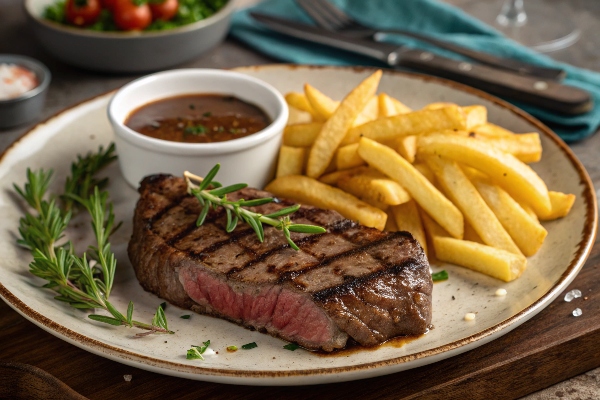
One bustling evening in a classic French brasserie, I discovered Steak Frites. A succulent piece of steak arrived, resting beside a generous pile of fries glistening with golden promise. Tucking into this simple yet refined plate, I grasped why it is venerated as one of the best french dishes. Each bite of the steak revealed flavorful juices, perfectly complemented by the satisfying crunch of crisp frites. It was both comforting and elegant, a love letter to tradition without a hint of pretension.
Steak Frites underscores how best french food recipes often draw on minimal ingredients to create maximum impact. A well-chosen cut of beef, seared to develop a savory crust, is central to french recipes authentic. The fries—expertly fried and lightly salted—complete a pairing that has reigned supreme in French bistros for decades. Every mouthful reveals a contrast between meaty tenderness and crunchy potatoes. It is a dish that invites convivial conversation, bridging the gap between fine dining and casual comfort.
- Level of Preparation: Medium
- Key Ingredients: Steak (sirloin, ribeye), potatoes, oil, salt, pepper
- Method & Steps:
- Season steak generously; sear in a hot pan until desired doneness.
- Fry potatoes until crisp and golden.
- Rest the steak briefly; serve with warm frites.
- Average Calories: ~600 per serving
- Techniques: High-heat searing, proper resting
- Budget: Moderate
Crêpes
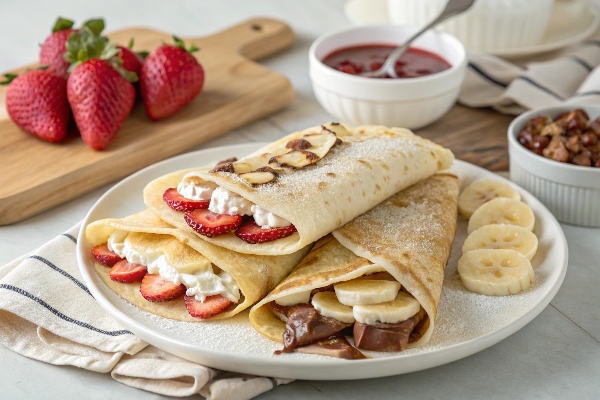
I fell in love with Crêpes at a bustling street stall in Montmartre. Thin, delicate pancakes sizzled on a hot griddle, calling out with the comforting scent of butter. Filled with sweet jam or savory ingredients, they seemed to contain the best of every world. In that paper-thin wrapper, I found yet another reason why this treat ranks among the best french dishes. Each tender fold whispered a story of tradition, artistry, and joie de vivre, capturing the essence of Paris in handheld form.
Crêpes embody an iconic aspect of french food—versatility. They celebrate the notion that a well-executed base can transform into countless creations. Whether you savor them simply with lemon and sugar or pack them with cheese and vegetables, they showcase french recipes authentic in their unfussy grace. Making a perfect Crêpe requires the right consistency of batter, skillful swirling in the pan, and a deft flip. Despite the technique involved, they remind us that exceptional cuisine needn’t be complicated, only thoughtfully crafted.
- Level of Preparation: Easy
- Key Ingredients: Flour, eggs, milk, butter, salt
- Method & Steps:
- Whisk batter; let it rest to develop flavor.
- Pour a thin layer onto a heated pan; swirl quickly.
- Flip once edges brown; fill and fold.
- Average Calories: ~150 per plain Crêpe
- Techniques: Batter resting, controlled flipping
- Budget: Low
Tarte Tatin
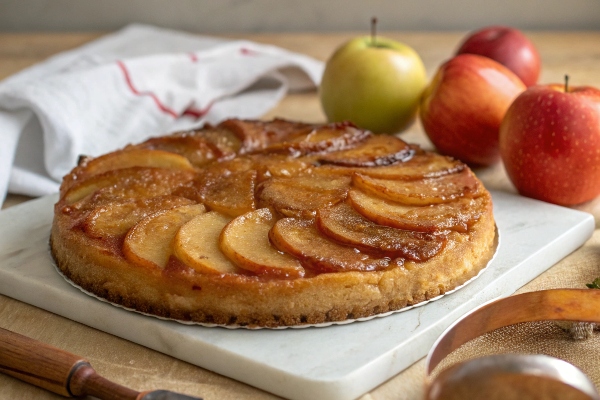
My first taste of Tarte Tatin came in a cozy Loire Valley kitchen, where the caramelizing apples filled the air with buttery sweetness. The drama of flipping it upside-down felt like a performance, revealing succulent fruit glistening beneath a golden crust. One bite enveloped my senses in a cascade of tender apple and sumptuous caramel—leaving no doubt it belongs among the best french dishes. With just apples, sugar, and pastry, it delivers a moment of pure indulgence that lingers lovingly on the palate.
Tarte Tatin champions the brilliance of french recipes authentic. Start by melting sugar and butter until they form a glowing caramel layer. Add sliced apples and top with pastry, allowing everything to bake in harmony. When flipped, you discover a crown of richly browned fruit—a testament to the understated magic of french food tradition. Its beauty lies in its simplicity and the deep flavors that develop with patient, gentle cooking. Each slice is a spoonful of rustic enchantment, bridging the gap between humble origins and refined results.
- Level of Preparation: Medium
- Key Ingredients: Apples, sugar, butter, pastry dough
- Method & Steps:
- Caramelize sugar and butter in an oven-safe skillet.
- Arrange apples in the caramel; cover with pastry.
- Bake until golden; carefully invert.
- Average Calories: ~350 per slice
- Techniques: Caramelizing, careful inversion
- Budget: Low to Moderate
Gratin Dauphinois
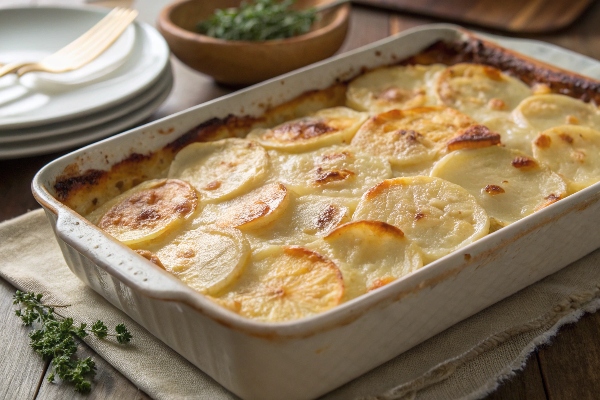
A trip through the French Alps introduced me to Gratin Dauphinois, and it was love at first bite. Thinly sliced potatoes baked in cream formed a dish so velvety that each forkful felt like a luxurious embrace. Its subtle richness proved that sometimes the best french dishes blossom from unassuming staples. Set against the Alpine landscape outside the window, this gratin offered soul-soothing comfort. I realized that, much like the mountains, the layers in Gratin Dauphinois hold immeasurable depth and timeless beauty.
What defines Gratin Dauphinois among best french food recipes is the way it turns simple potatoes into a decadent feast. In accordance with french recipes authentic tradition, potatoes simmer with garlic, milk, and cream. The slow baking allows the flavors to fuse, creating a soft, melt-in-your-mouth texture crowned with a lightly browned top. Though it pairs elegantly with hearty roasts, it can also stand on its own. It’s a comforting reminder that humble ingredients—when nurtured gently—can unlock profound satisfaction in every slice.
- Level of Preparation: Easy to Medium
- Key Ingredients: Potatoes, cream, milk, garlic, optional cheese
- Method & Steps:
- Slice potatoes thinly.
- Layer in a dish; pour in milk, cream, and garlic.
- Bake until tender, letting the top gently brown.
- Average Calories: ~300 per serving
- Techniques: Layering, slow baking
- Budget: Low
Sourcing Authentic Ingredients and Mastering Techniques
The splendor of the best french dishes does not rely solely on following a recipe; it also involves seeking out top-tier ingredients and honing fundamental techniques. When embarking on best french food recipes, take time to find fresh, high-quality produce. Seek local farmers’ markets or specialty grocers that supply seasonal vegetables and artisanal cheeses. Consider choosing organic or free-range poultry when recreating traditional cassoulet recipe or preparing Duck Confit.
Pay attention to the variety of onions you use for Soup à l’Oignon, as sweetness and caramelization potential may vary. Even the potatoes for Gratin Dauphinois benefit from selecting the right starchy or waxy type. In the spirit of french recipes authentic, a dish starts with the best possible ingredients, so invest care in every choice.
Equally crucial is technique—knowing how to sauté, simmer, bake, or fold batter with finesse. Take Ratatouille: vegetables need separate sautéing to preserve individual flavors before melding. For Duck Confit, the slow, low-heat immersion in rendered fat achieves tenderness that no shortcut can replicate. A properly seared steak in Steak Frites forms a savory crust while locking in juices. The hallmark of french food is respect for each step, no matter how basic it may seem.
Mastery of these foundational skills ensures dishes remain faithful to their origins while allowing you a measure of creative license. Ultimately, that is the charm of french recipes authentic—an interplay of tradition, technique, and the best ingredients, resulting in flavors that stand the test of time.
Conclusion
Across these ten dishes—from the cozy caress of Soup à l’Oignon to the indulgent embrace of Duck Confit—there’s ample evidence that the best french dishes transcend borders and trends. Each creation is a tapestry of fresh ingredients, careful preparation, and heritage, epitomizing the artistry of french recipes authentic. This journey through french food highlights how classic methods remain relevant, constantly inspiring both new and experienced cooks. By embracing their timeless magic, you can bring the romance of France into your own kitchen.
These best french food recipes dazzle with variety: some comforting and rustic, others elegant and refined. Yet all share a common virtue—every morsel tells a story of generations past, woven into today’s table. Whether you’re ladling up a bowl of traditional cassoulet recipe or delicately flipping Crêpes, you join a lineage of gastronomic explorers committed to honoring flavor, texture, and tradition. Embrace their legacy, and you’ll uncover a vibrant world in each bite, securing your own place in the continuing saga of French culinary splendor.
“After indulging in the Best French Dishes, why not embark on a journey through France’s most breathtaking landscapes? From charming villages to dreamy coastal retreats, these 17 Enchanting Escapes in France promise unforgettable romance and awe-inspiring beauty.”
What is the most iconic French dish for first-time visitors to try?
If you’re visiting France for the first time and want a classic introduction to french food, Soup à l’Oignon (French Onion Soup) is an excellent choice. This dish embodies the warmth and comfort of French cuisine with its deeply caramelized onions, rich broth, and golden, melted cheese over toasted baguette slices. It’s widely available in brasseries and bistros, making it easy to experience an authentic taste of France.
Are there any easy French dishes for beginners to cook at home?
Yes! Crêpes are one of the easiest best french food recipes for beginners. With just flour, eggs, milk, butter, and a pinch of salt, you can create thin, delicate pancakes that can be served sweet (with Nutella, fruit, or honey) or savory (with cheese, ham, or spinach). The technique is simple, and with practice, you’ll master the art of flipping them like a true Parisian chef.
What is a great French dish for a dinner party?
Duck Confit is a show-stopping dish that will impress your guests. Though it requires patience, as the duck slowly cooks in its own fat until perfectly tender, the crispy golden skin and rich, deep flavors make it worth the effort. Pair it with roasted potatoes or a fresh salad, and you’ll serve a meal that feels both luxurious and effortlessly French.
Can I make a traditional cassoulet recipe without meat?
Yes! While traditional cassoulet recipe is typically made with poultry, sausage, and slow-cooked beans, a vegetarian version is possible. Substitute the meat with hearty vegetables like mushrooms, carrots, or eggplant, and use vegetable stock instead of chicken broth. Adding smoked paprika or sun-dried tomatoes can help recreate the rich depth of flavor found in the original.
What is a must-try French dessert for those who love sweets?
Tarte Tatin is a must-try for dessert lovers. This upside-down caramelized apple tart offers a perfect balance of buttery, flaky pastry and lusciously tender fruit. The caramelization process enhances the natural sweetness of the apples, creating a luxurious yet simple dessert that has been a beloved part of french recipes authentic for generations. Best served warm with a scoop of vanilla ice cream!

